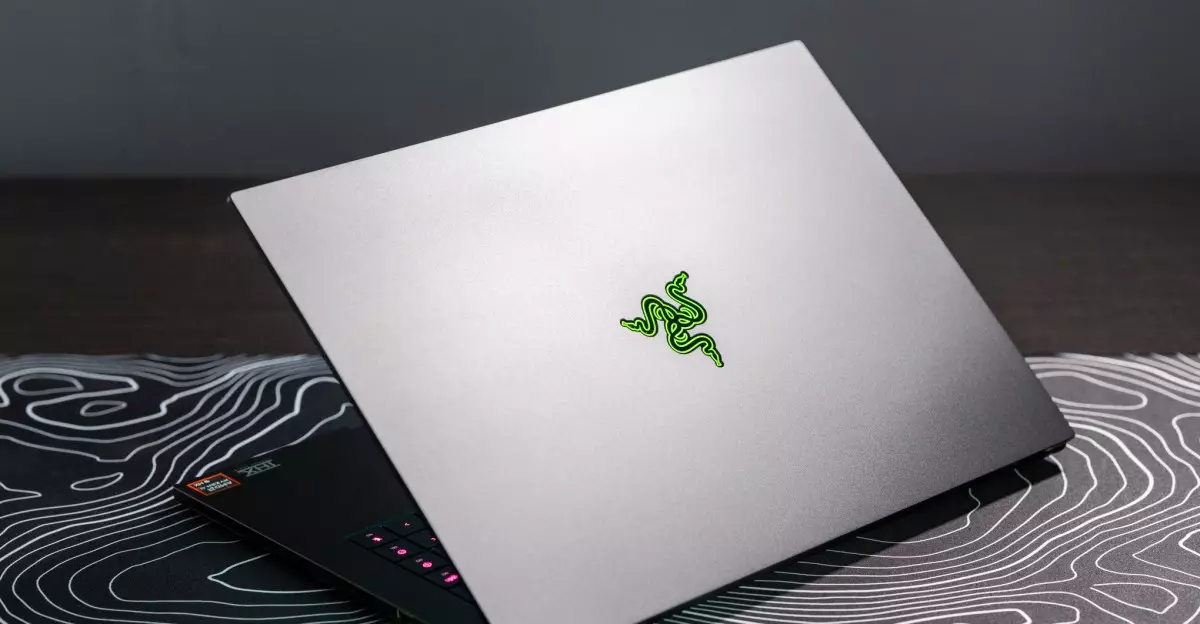The Razer Blade 16 has stepped onto the stage as a contender in the elite gaming laptop category, aiming to bridge the gap between performance and design. Set against a backdrop dominated by the likes of Apple’s MacBook Pro, Razer endeavors to establish an identity that reflects both cutting-edge gaming capabilities and a sleek aesthetic. Yet, does this 16-inch device truly deliver on the promise of being a high-end gaming machine while still presenting itself as a sensible choice for everyday tasks? Or does its hefty price tag leave consumers feeling more frustrated than fulfilled?
With the latest iterations of Nvidia’s powerful RTX 5090 GPU humming beneath its chassis, the Blade 16 presents a compelling performance narrative. The starting price of $4,499.99 raises eyebrows, especially as it exceeds its predecessor—the 4090 model—by $200. What one hopes for, at this premium price, is an experience devoid of significant flaws. Sadly, early impressions suggest that even before benchmarking its gaming chops, users might find themselves grappling with unforeseen hardware inconsistencies.
Design and Aesthetics: A Blade of Obsidian
There’s no denying that the Razer Blade 16 has an eye-catching physical presence. The sleek and thinner design, which is notably 7mm shorter and 0.8 pounds lighter than its predecessor, reveals an intention to create a device that is not only capable but also aesthetically pleasing. It evokes a sense of elegance that is often rare in gaming laptops. However, aesthetics are only half of the equation—as anyone who has used a laptop for prolonged periods can attest, practicality must also be considered.
The strikingly vibrant 2560 x 1600 OLED display, enhanced by a smooth 240Hz refresh rate, is commendable and acts as an inviting window into immersive gaming worlds. However, the visual delight could easily be sullied by usability flaws. The keyboard, while generally effective, features a row of macro keys that can be more of a hindrance than a help. Such missteps in design indicate a potential oversight on Razer’s part regarding user ergonomics, especially for gamers who rely on precision during intense sessions.
Power and Performance: A Double-Edged Sword
The real meat of the Blade 16 lies in its performance capabilities, largely bolstered by the RTX 5090 GPU. Players and creators alike are eager for advancements that translate into smoother gameplay and faster rendering times, and here, Nvidia claims notable efficiency improvements over its predecessors. Yet, amidst the promise of power lies an unsettling reality—early users have encountered sporadic bluescreens. Although Razer’s support team should ideally address these issues swiftly, they cast a shadow over the product’s reliability right out of the gate.
As the Blade 16 is marketed as a multi-faceted tool for gaming and productivity, one might reasonably expect it to excel across a variety of tasks—from graphics-intensive gaming to mundane business applications. However, the laptop’s apparent struggle to maintain battery life even under light workloads raises questions. Here we arrive at an ironic juncture: the very device designed for productivity and creativity seems to falter when faced with regular tasks, failing to deliver even a meager five and a half hours of usage.
The Price Dilemma: Value vs. Cost
One of the most contentious points regarding the Razer Blade 16 is its exorbitant price. For a gamer’s budget, $4,499.99 isn’t just a hurdle; it’s an entire obstacle course. In the current landscape, a compact MacBook Pro, which smoothly integrates into creative workflows and boasts stronger battery longevity, is positioned as an affordable alternative for roughly half the cost. This begs the question: is the single-device convenience of a gaming laptop valuable enough to justify such a steep entry fee?
Despite the blade’s undeniable charm and raw power, one cannot ignore the looming presence of other options that can accommodate both work and play without testing the limits of one’s wallet. The allure of owning a single, versatile machine is enticing, sure, but practical users are bound to wonder if they might be better served by a combination of specialized devices that deliver on their promises without faltering.
In essence, while the Razer Blade 16 may shine in several domains, its ability to provide a seamless experience at such a high price point is under scrutiny. With concerns ranging from inconsistent performance to questionable battery life, prospective buyers must weigh their options carefully in a market that offers both lower-priced competitors and products that deliver comparable or superior performance.

